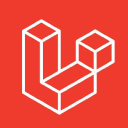How I Started A 7-Figure Online Language Learning Platform Thanks To SEO
Hello! Who are you and what business did you start?
I am the CEO and co-founder of the Live Lingua online language learning platform. Live Lingua offers a unique and immersive approach to mastering a new language, as it pairs users who want to learn Spanish, French, German, Chinese, and more with their own hand-picked, certified, native-speaking tutor for online teaching sessions. I build and also help others build 6- and 7-figure businesses on a bootstrap budget using SEO.

What's your backstory and how did you come up with the idea?
I came up with the idea because of the Mexican swine flu. My wife and I started our first business back in 2008, which was a brick-and-mortar Spanish language immersion school in Mexico. My wife is Mexican (but went to university in the US) and was my Spanish teacher when I arrived in...

Download the report and join our email newsletter packed with business ideas and money-making opportunities, backed by real-life case studies.

Download the report and join our email newsletter packed with business ideas and money-making opportunities, backed by real-life case studies.

Download the report and join our email newsletter packed with business ideas and money-making opportunities, backed by real-life case studies.

Download the report and join our email newsletter packed with business ideas and money-making opportunities, backed by real-life case studies.

Download the report and join our email newsletter packed with business ideas and money-making opportunities, backed by real-life case studies.

Download the report and join our email newsletter packed with business ideas and money-making opportunities, backed by real-life case studies.

Download the report and join our email newsletter packed with business ideas and money-making opportunities, backed by real-life case studies.

Download the report and join our email newsletter packed with business ideas and money-making opportunities, backed by real-life case studies.






































